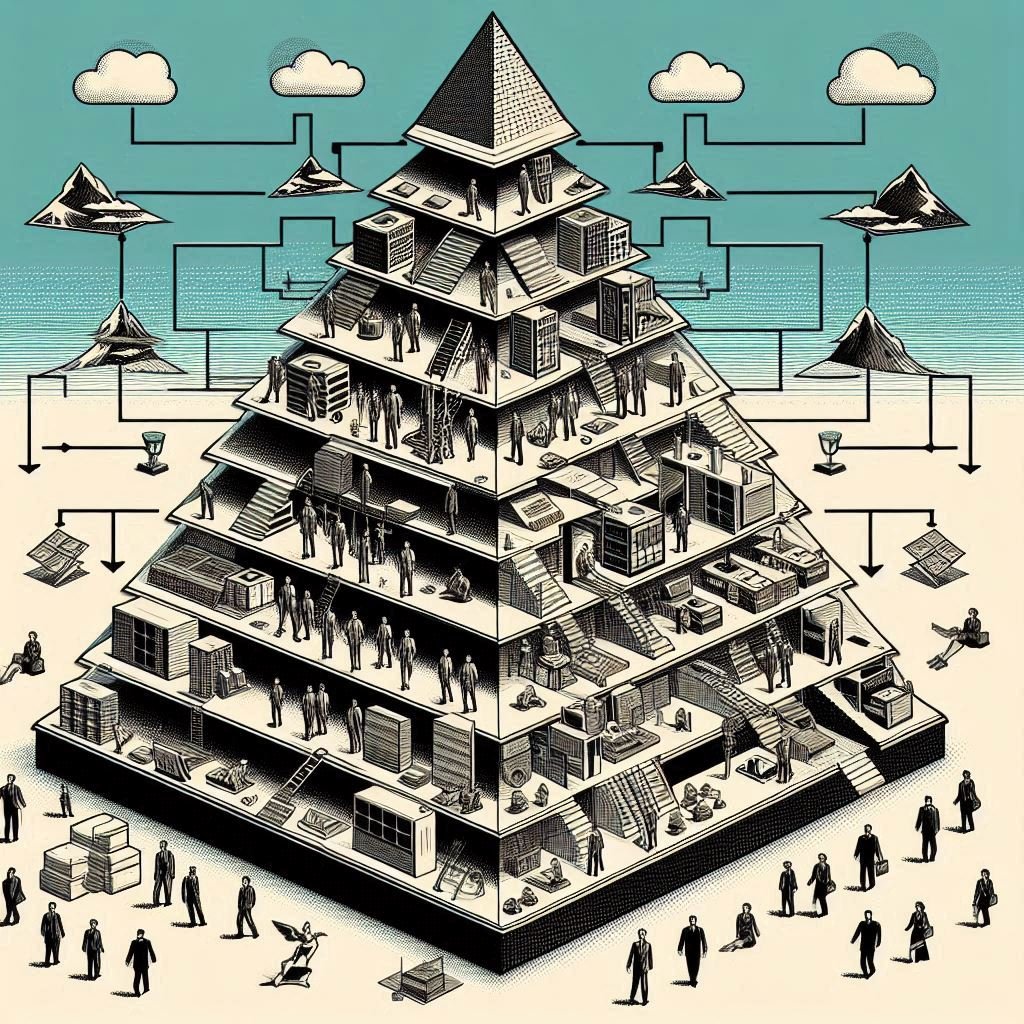Organizational charts traditionally illustrate accountabilities and responsibilities within a company, often visualized as a pyramid. At the base are employees with less experience, while leaders sit at the pinnacle. Career-oriented individuals are generally encouraged to “climb the corporate ladder,” a phrase that has become deeply embedded in American corporate vernacular.
However, this depiction is fundamentally flawed. The organizational chart should not be a pyramid; it should be inverted, more akin to a tree. In this metaphor, the trunk represents leadership, supporting the entire organization. The branches symbolize middle managers, and the leaves are the individual contributors who collect and harness the organization’s energy and ideas, much like leaves absorbing sunlight.
Here, the leader’s role is not to sit above, but to bear the responsibility of supporting the entire structure. Should the “trunk” — the CEO, for instance — falter, the entire tree is at risk. In this inverted model, accountability flows from the top down, with leaders and managers tasked with empowering their teams.
This shift in perspective better aligns with the modern demands of leadership, where the focus should be on enabling and supporting those who deliver the organization’s value.
The Evolution of Leadership Theory
The traditional hierarchical pyramid structure emerged during the Industrial Revolution, where command-and-control leadership was paramount for standardizing production and maintaining order (Wren & Bedeian, 2020). However, contemporary leadership theories suggest that this model may be obsolete in today’s knowledge-based economy. According to research published in the Harvard Business Review, organizations that adopt servant leadership principles consistently outperform their competitors in employee satisfaction, customer loyalty, and financial performance (Anderson & Adams, 2019).
The Servant Leadership Model
Robert K. Greenleaf first introduced the concept of servant leadership in 1970, proposing that effective leaders should prioritize serving their teams rather than commanding them. This philosophy aligns perfectly with the inverted pyramid model, where leaders act as foundational support for their organizations. A meta-analysis by Eva et al. (2019) in the Journal of Management found that servant leadership correlates positively with employee engagement, organizational citizenship behavior, and overall performance metrics.
Practical Implications of the Inverted Pyramid
The inverted pyramid model fundamentally reshapes our understanding of organizational dynamics in several ways:
- Resource Allocation: Leaders become responsible for ensuring their teams have the necessary resources, training, and support to succeed. Research by Deloitte shows that organizations that prioritize employee development see 24% higher profit margins (Deloitte Global Human Capital Trends, 2023).
- Decision-Making: Instead of decisions flowing downward, the inverted model encourages bottom-up innovation and problem-solving. Front-line employees, who directly interact with customers and products, are empowered to make meaningful contributions to organizational strategy.
- Accountability: Leaders bear the weight of organizational success, much like the trunk of a tree supports its branches. This structure naturally promotes transparency and responsible leadership.
Challenges and Implementation
Transforming an organization from a traditional to an inverted pyramid structure presents significant challenges. A McKinsey study found that 70% of organizational transformation efforts fail, primarily due to employee resistance and leadership hesitation (McKinsey & Company, 2022). However, successful implementations share common characteristics:
- Clear communication of the new organizational philosophy
- Gradual implementation with measurable milestones
- Comprehensive leadership development programs
- Regular feedback mechanisms
- Cultural reinforcement through rewards and recognition
The Future of Organizational Structure
As we move further into the digital age, the need for adaptive, employee-centric organizational structures becomes increasingly apparent. The COVID-19 pandemic has accelerated this trend, with remote work and distributed teams becoming the norm. According to a Gartner survey, 48% of employees will likely work remotely at least part of the time in the post-pandemic world, making traditional hierarchical structures less relevant (Gartner, 2023).
Conclusion
The inverted pyramid model represents more than just a reorganization of reporting lines; it embodies a fundamental shift in how we view leadership and organizational effectiveness. By placing leaders at the foundation rather than the apex of the organization, we create structures that better serve both employees and organizational objectives. As businesses continue to evolve in an increasingly complex global environment, those that embrace this supportive, service-oriented leadership model will likely find themselves better positioned for sustainable success.
Citations
Wren, D. A., & Bedeian, A. G. (2020). The evolution of management thought (8th ed.). John Wiley & Sons.
Anderson, R. J., & Adams, W. A. (2019). Scaling leadership: Building organizational capability and capacity to create outcomes that matter most. John Wiley & Sons.
Eva, N., Robin, M., Sendjaya, S., van Dierendonck, D., & Liden, R. C. (2019). Servant leadership: A systematic review and call for future research. The Leadership Quarterly, 30(1), 111-132. https://doi.org/10.1016/j.leaqua.2018.07.004
Deloitte. (2023). 2023 Global human capital trends. Deloitte Insights. https://www2.deloitte.com/us/en/insights/focus/human-capital-trends/2023.html
McKinsey & Company. (n.d.). Why do most transformations fail? A conversation with Harry Robinson. McKinsey & Company. https://www.mckinsey.com/capabilities/transformation/our-insights/why-do-most-transformations-fail-a-conversation-with-harry-robinson
Gartner. (n.d.). Almost 50% of employees will continue to work remotely post COVID-19. Gartner. https://www.gartner.com/en/human-resources/trends/remote-work-revolution

